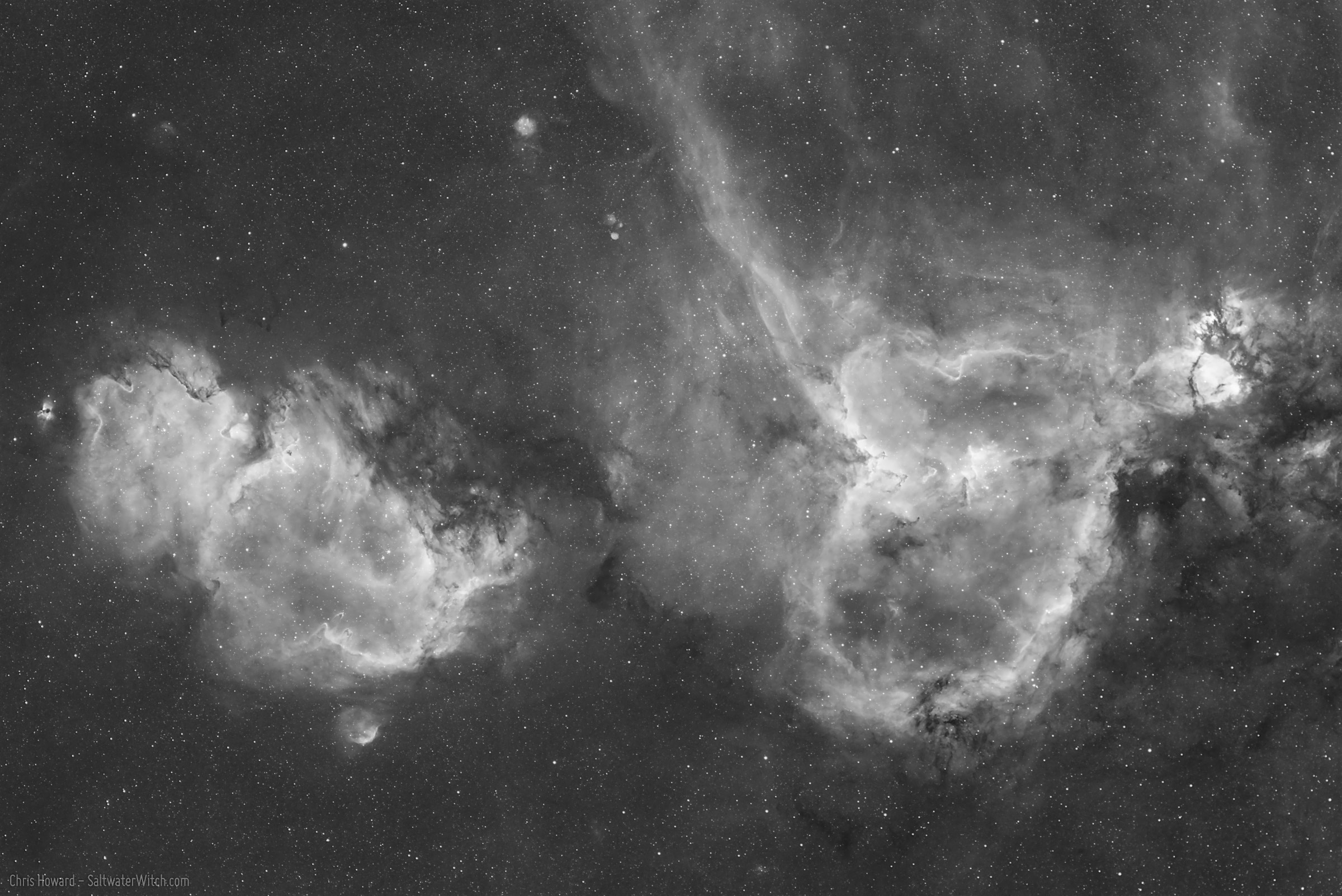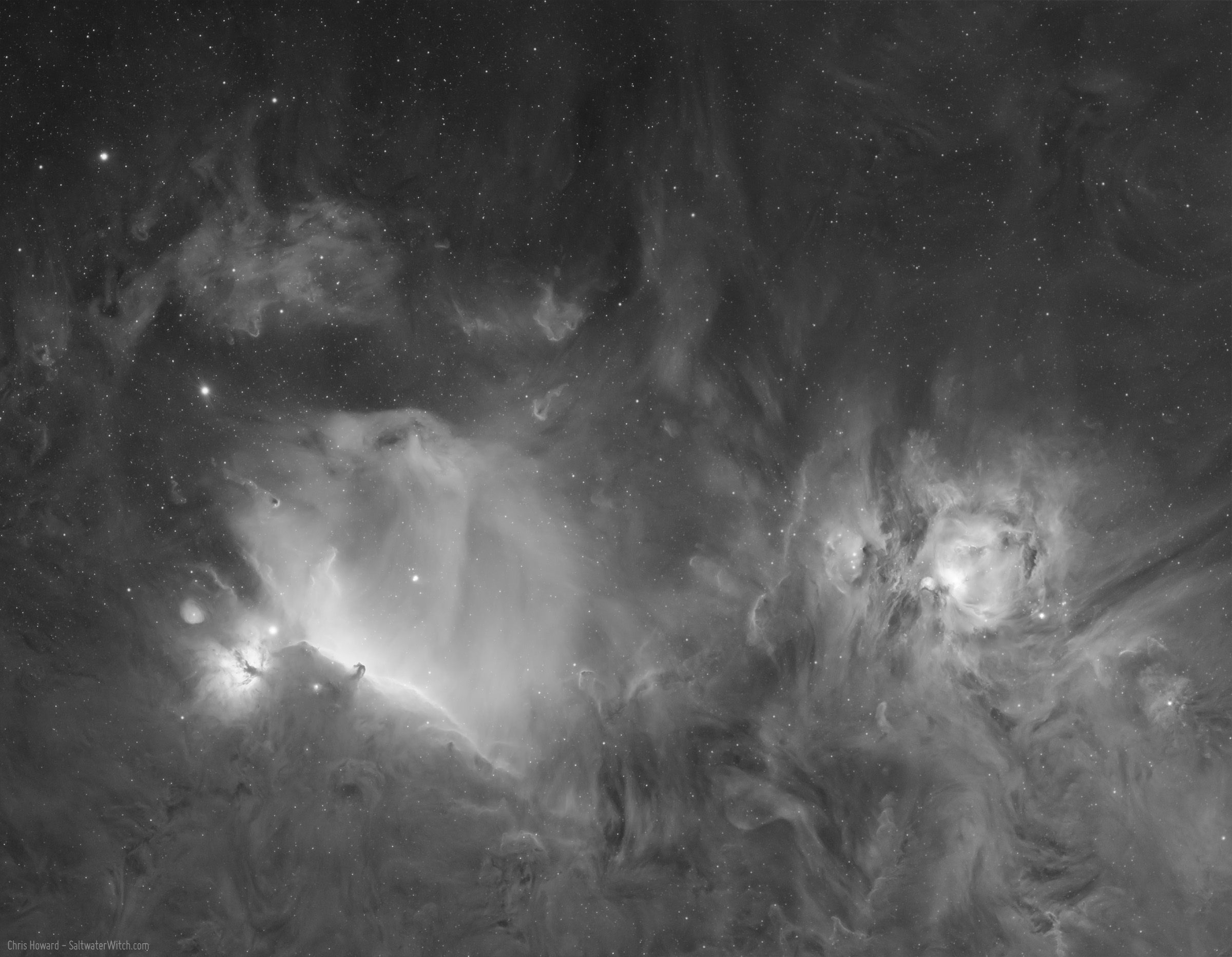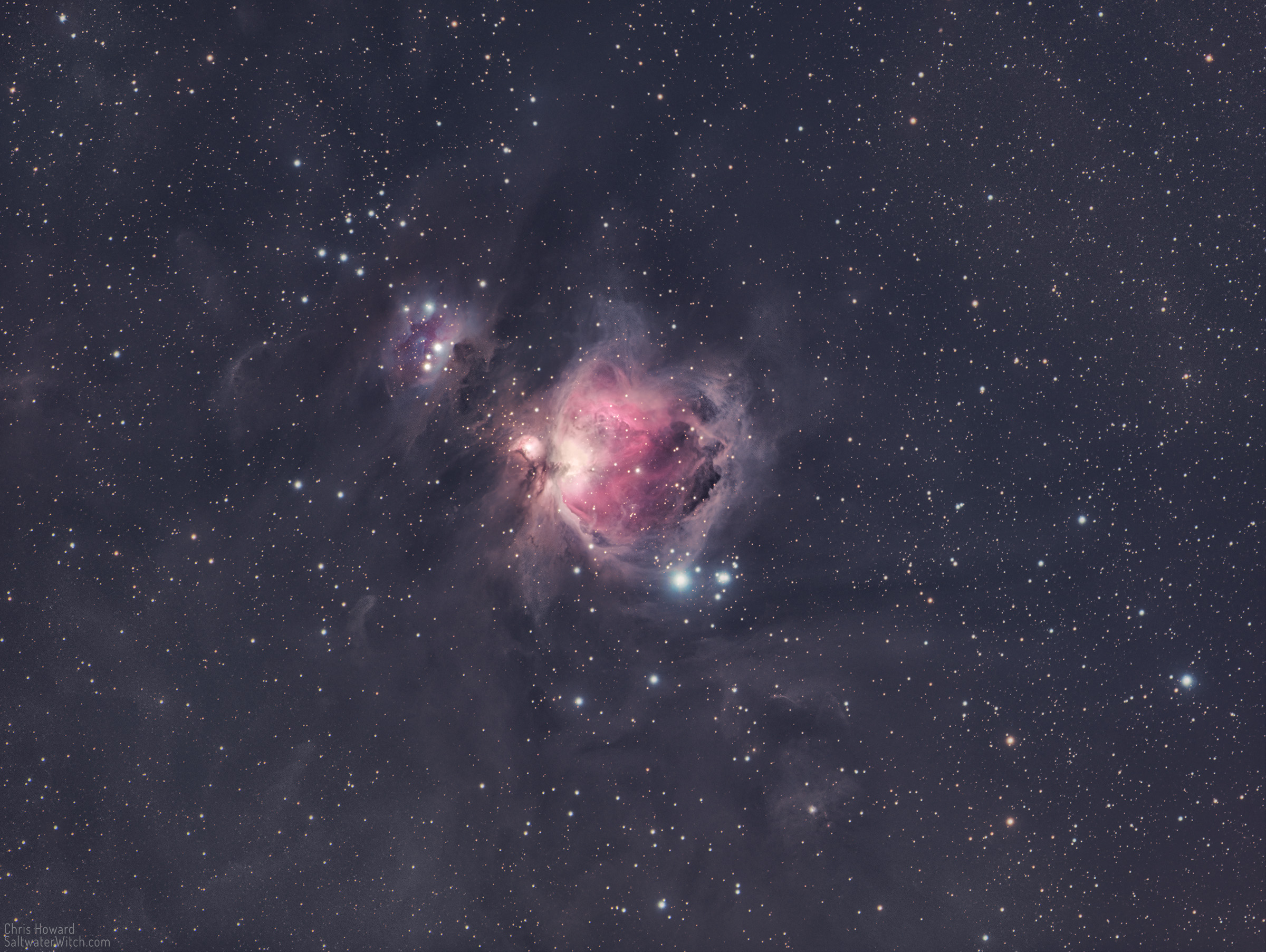Imaging Session 2023-11-16
The Heart Nebula on the right (IC 1805, Sharpless 2-190) and Soul Nebula, left, (Westerhout 5 with the star cluster IC 1848) in Hydrogen-alpha. These two make up a massive star-forming complex in Cassiopeia about 7500 lightyears away in the Perseus Arm of our Galaxy. The bright emission nebula on the far right is the Fishhead Nebula (NGC 896, IC 1795). The small circular cloud, middle top, is another emission nebula Sh2-198, much further away, around 18,000 lightyears (still, well within the galaxy). The bright cluster of stars in the core of the Heart Nebula is Melotte 15.
Imaging Notes: 51 x 5-minute exposures stacked in PI, ZWO ASI2600MM-Pro monochrome camera cooled to -10C, 3nm Antlia Pro Hydrogen-alpha filter, William Optics SpaceCat 51 apo refractor, Sky-Watcher EQ6-R Pro mount. Shot from my backyard in coastal New Hampshire, bortle 4-ish.
Orion Core: two-panel mosaic of Orion's Belt, the Horsehead Nebula, and M42, the Orion Nebula.
Posted November 17, 2023
M42 up close in Ha
The Orion, De Mairin and Running Man Nebulas (M42, M43, NGC 1977) in narrowband hydrogen-alpha. 36 x 300-second exposures, Newtonian 800mm @ f/4.

Posted October 22, 2022
Orion Nebula in RGB
It's that time of year—my favorite, in fact. The autumnal equinox was on the 22nd, and that means Orion is back in the night sky, well actually in the very early morning sky. Last night the whole constellation was above the trees, around 25° rising in the East at 2 AM, and I captured 30 subs each for Red, Green, Blue, Luminance. Here they are stacked and processed.
Posted September 29, 2022
Orion Nebula (Messier 42)
From last night's imaging run: The Orion Nebula (M42) is one of my all-time favorite deep sky objects, and the Constellation Orion is in my top five places to go with a telescope. Imaging Notes: Ha+RGB, Ha: 55 x 240-second subs, color: 123 x 120-second subs stacked in DSS, processed in PSCC2022. William Optics SpaceCat51 Apo refractor, ZWO ASI071MC cooled color camera & ASI1600MM-Pro monochrome camera, Controller: INDI, Ekos, KStars.
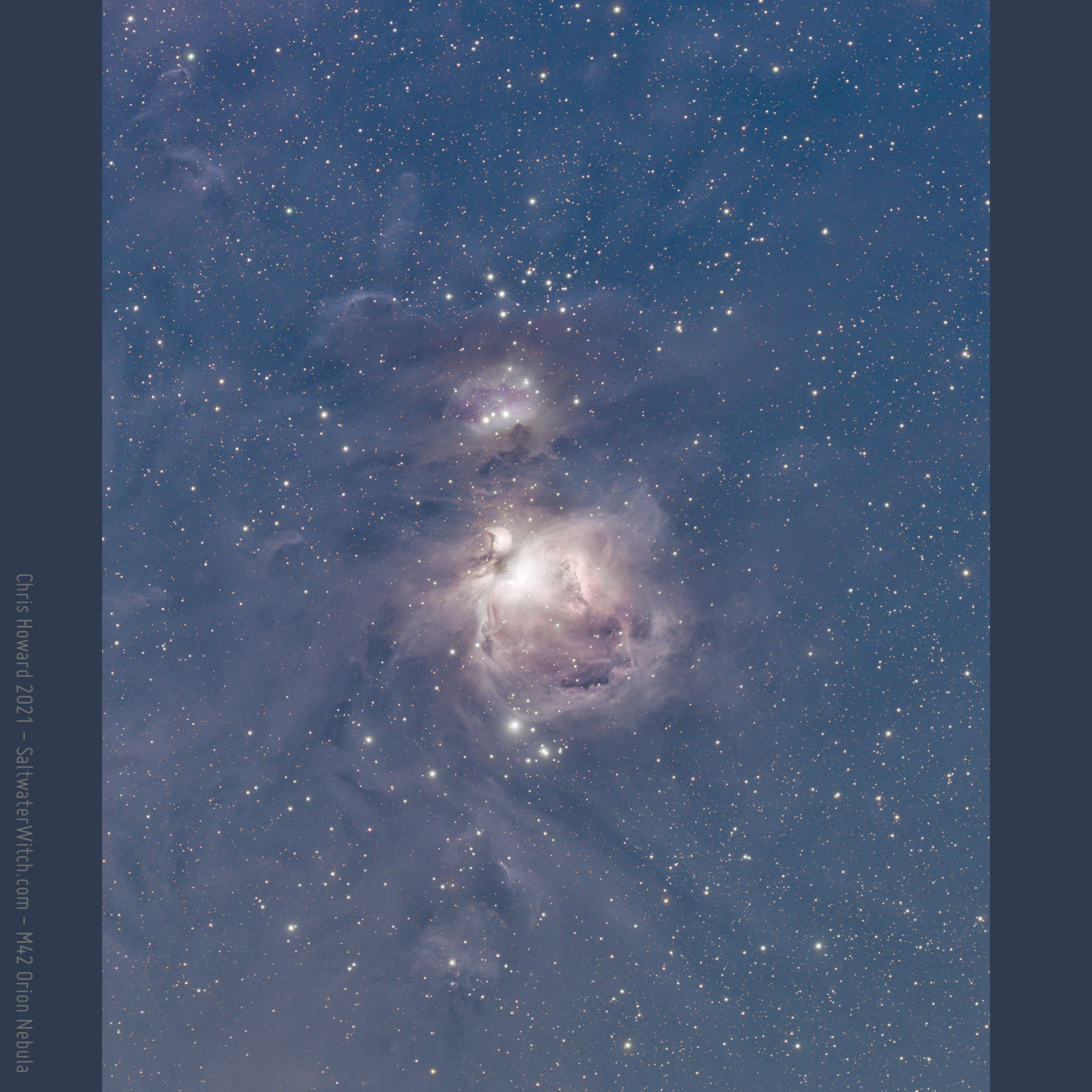
Posted November 4, 2021
Orion Nebula (M42) in Hydrogen-alpha
More fun with the Antlia 3nm Ha filter on the William Optics SpaceCat 51. 55 x 240-second stacked subs of the Orion Nebula and surrounding clouds of atomic hydrogen.

Posted October 12, 2021
The Orion Nebula in Hydrogen-alpha
I have to capture M42, M43, NGC 1977, the Orion, De Mairan's, and Running Man Nebulae at least once a year, and now through December is when the Constellation is high in the sky and still early enough be awake--I captured most of the 52 subs that went into this shot between 11:30 and 2am. This is just one filter's worth. I have to go back and either take OIII and SII or Blue and Green, using this Ha capture for the Red channel in RGB.
Imaging session notes: 52 x 240 second subs + 50 x 10 second subs for the Trapezium, stacked in DSS, processed in PS 2021. SkyWatcher EQ6-R Pro mount, William Optics GT81 Apochromatic Refractor 392mm at f/4.7, ZWO ASI1600MM-Pro monochrome camera, Astronomik 6nm Ha filter, Controller: Raspberry Pi 4 4GB / 128GB running INDI/KStars/Ekos.
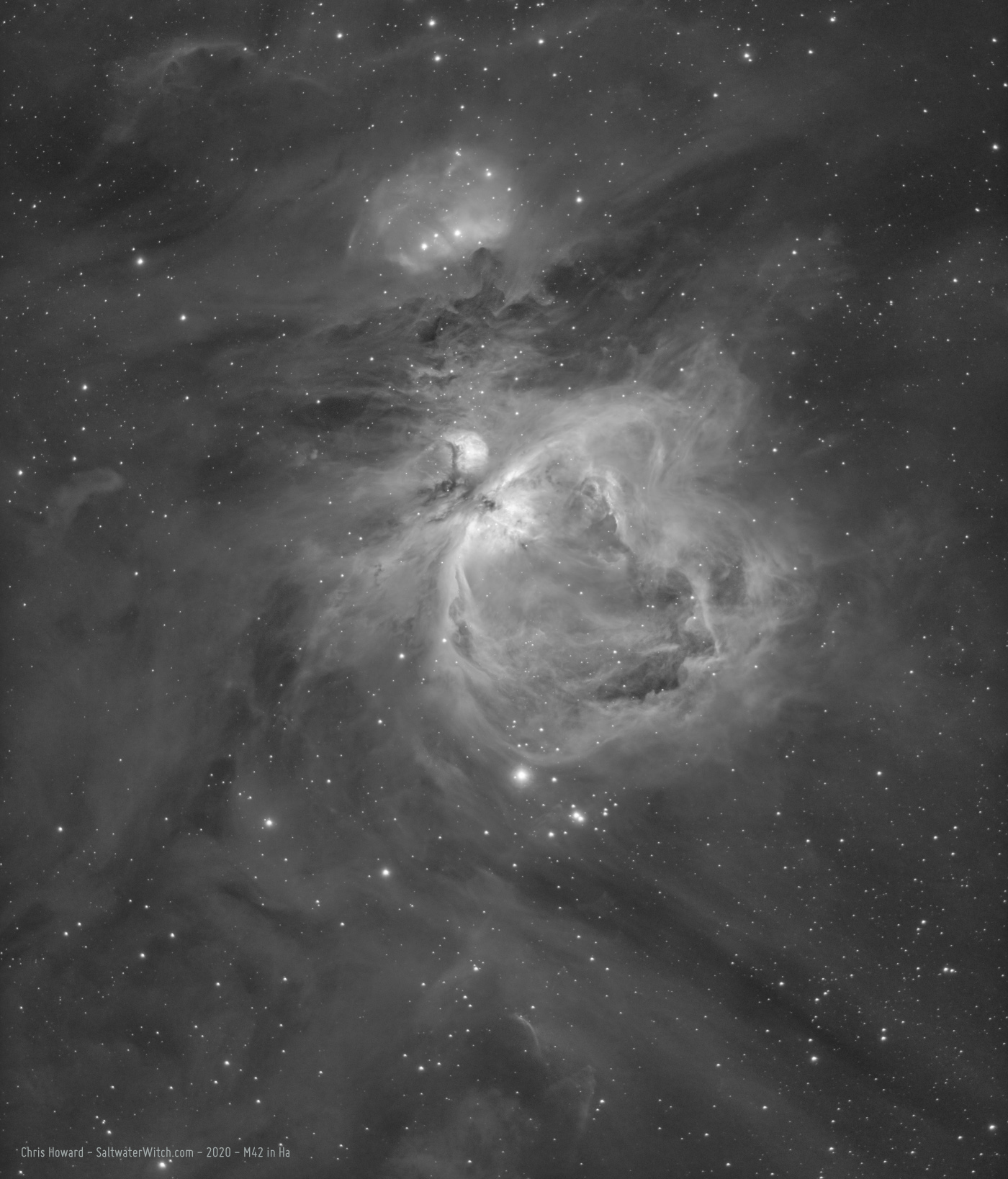
Posted November 10, 2020
High-gain Test - Gathering Narrowband Data
Autumn is officially here, and this is the season of the Pleiades, Orion, the nebulae in the constellations of Perseus, Monoceros, Auriga, Taurus, and Gemini. Now, M42 isn't in view until 2am, so that had to be the last in the sequence. And, yes, you can tell I was just dorking around with filters with our galactic neighbor, Andromeda M31, in near IR and hydrogen-alpha. I know M31 is a decent Ha target, and you can see some wonderful images in Ha-RGB out there in the world, but I had never tried shooting 2-minute subs of M31 with a 685nm long pass filter.
I ran the ZWO ASI1600MM-Pro mono CMOS camera at a gain of 200 and offset of 65 in the following shots. And no calibration frames for any of these. Higher gain reduces dynamic range, but you're also reducing read noise and gaining (ha ha) resolution and the ability to shoot shorter exposures--and more of them, and if you take enough subs, this should balance things out. There are miles of discussion on gain and offset in astro-imaging, but I was recently reading Jon Rista's comments in an astrobin forum thread and that got me to test out higher gain/offset.
M31 in Near-IR + Ha

I moved over to Cassiopeia and shot 40 x 4-minute subs each of IC 1805 (Heart Nebula) and IC 1848 (Soul Nebula) in Hydrogen-alpha. Here's the stitched together pair:
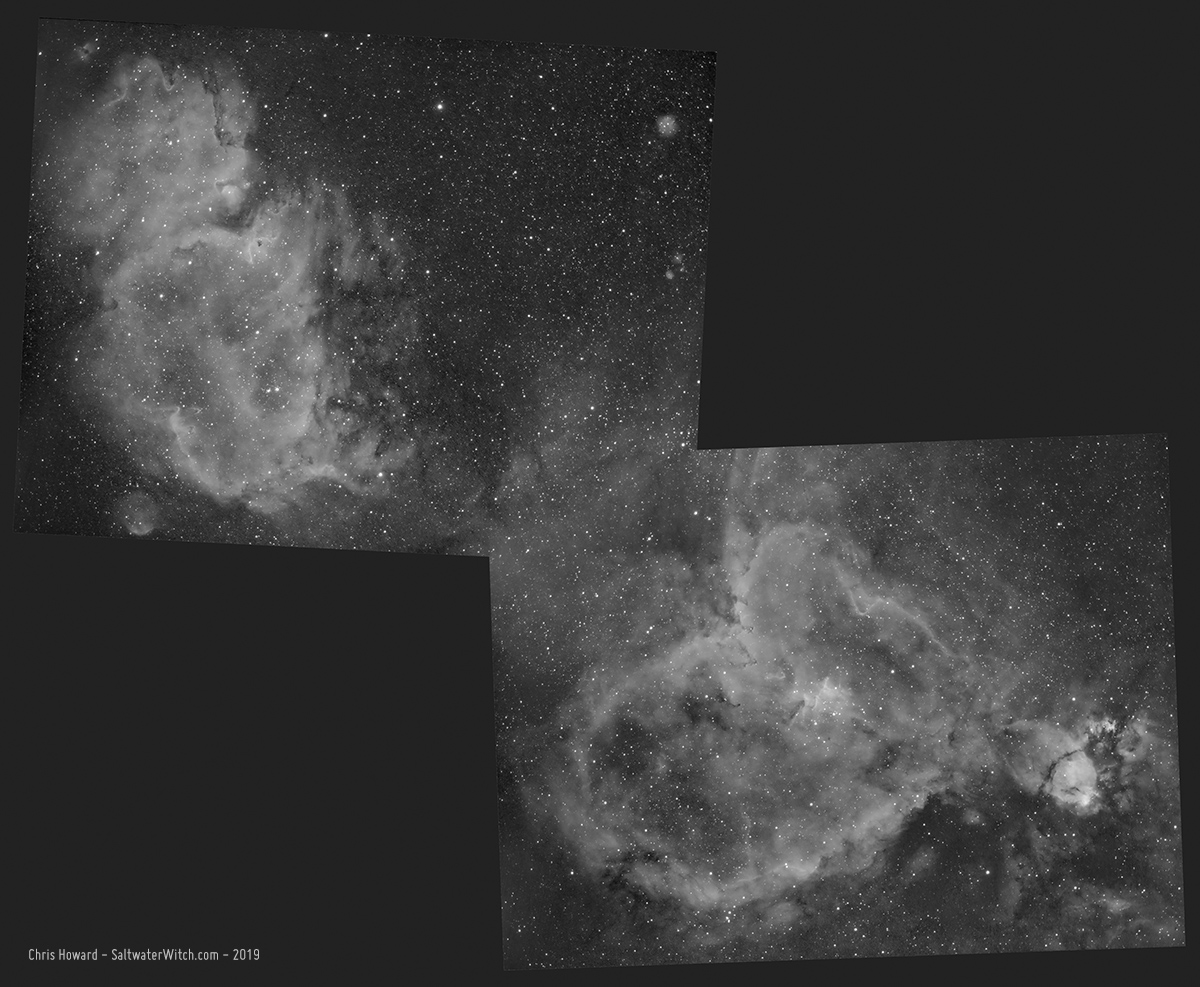
Still waiting for Orion to get above 30°, I spent some time on NGC 1499 "California Nebula"
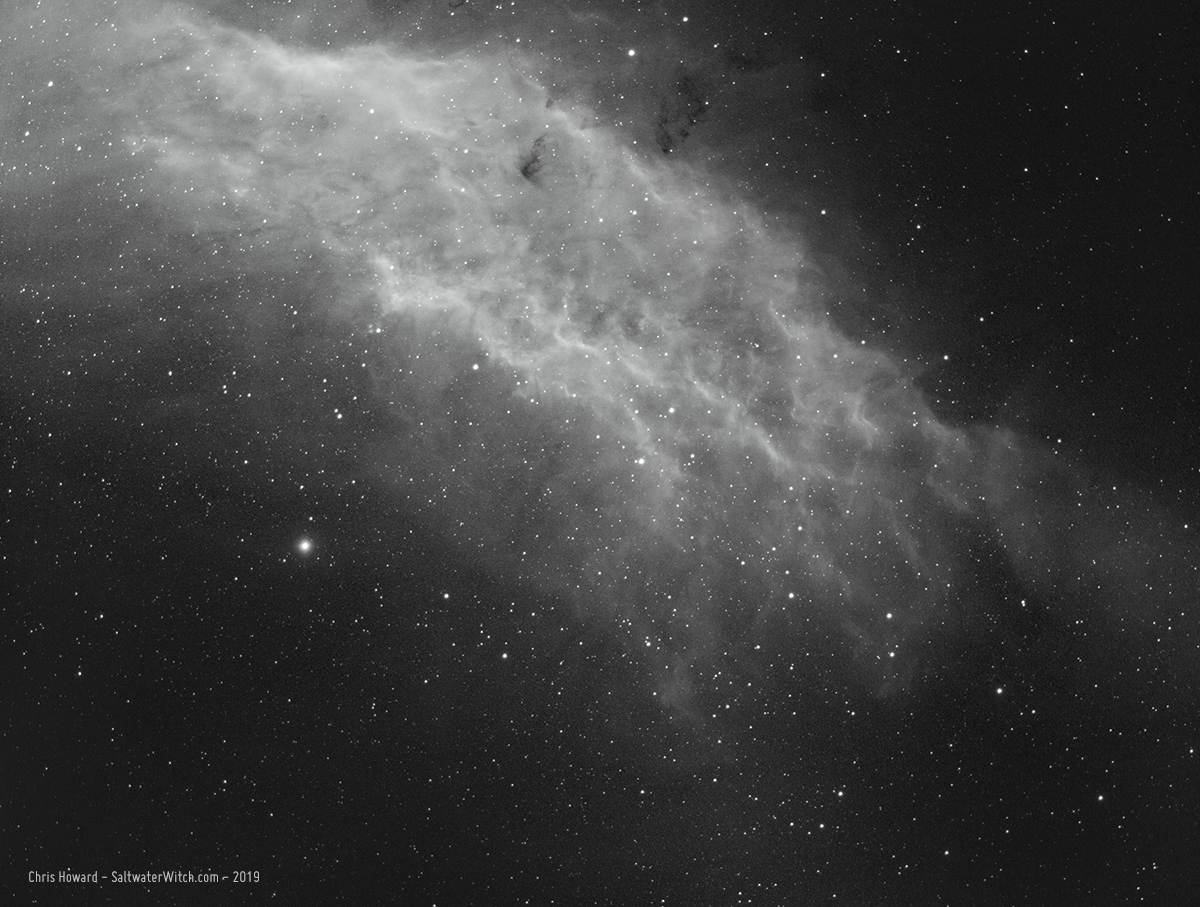
And Orion is back in the sky! Sure, you have to get up at 3 in the freakin' morning to see it with your own eyes. Or you can program your astro imaging system to stay up all night and take pictures without you. Here's M42, Orion Nebula, along with M43, De Mairan's Nebula--that's the spherical-looking cloud formation with the big bite taken out of it. And above that, shining brightly, Sh2-279 Running Man Nebula--although the famous running man shape isn't clear in hydrogen alpha. I'm not sure how well it comes out with oxygen III and sulfur II, but I'll come back another night to capture the OIII and SII frames. Notes: 31 x 240 second exposures in Ha + 20x 10 second subs just for the Trapezium (the super bright core of the Orion Nebula--so bright I have to take separate short exposure shots and merge it back in processing). William Optics GT81 APO refractor, ZWO ASI1600MM-Pro mono camera, Astronomik 6nm Ha filter.
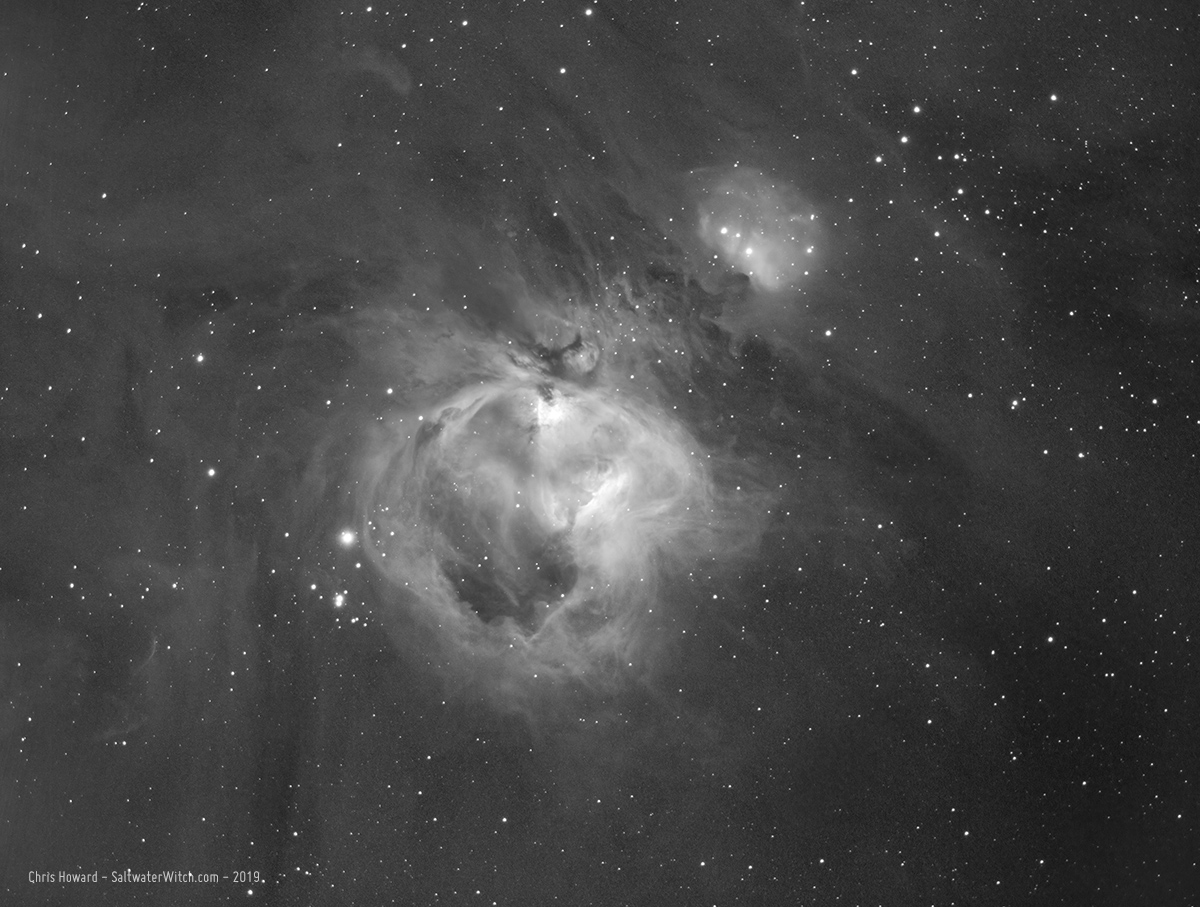
Posted September 26, 2019
Very wide-angle view of the sky
Here's my first night out with the Irix 15mm f/2.4 Blackstone (the heavier, more durable, aluminum and magnesium alloy housing version of this lens). And I'm impressed with just a few shots, wide-open aperture, and single 15 - 20 second exposures--no tripod, although I rested the Nikon on the deck railing.




